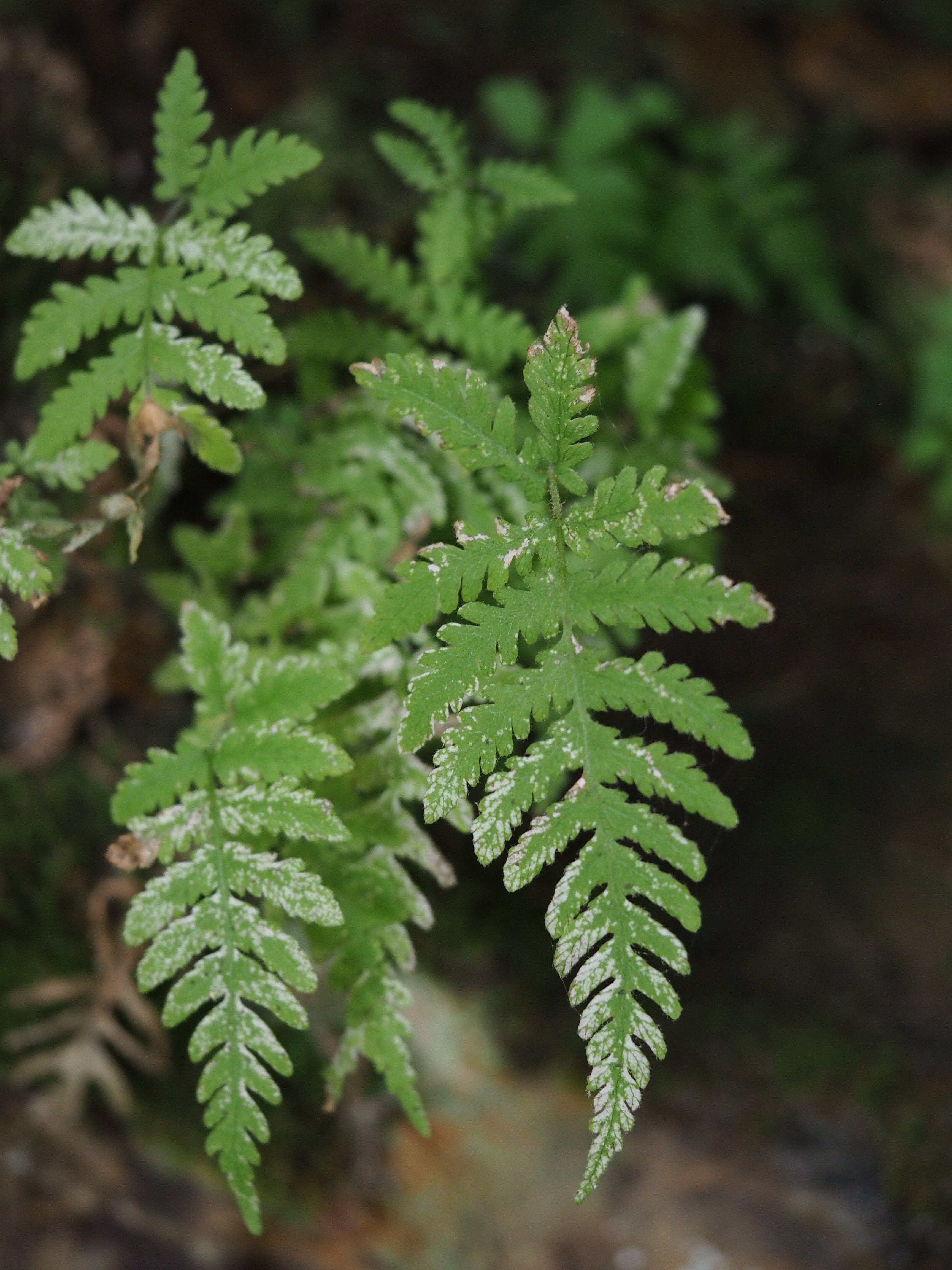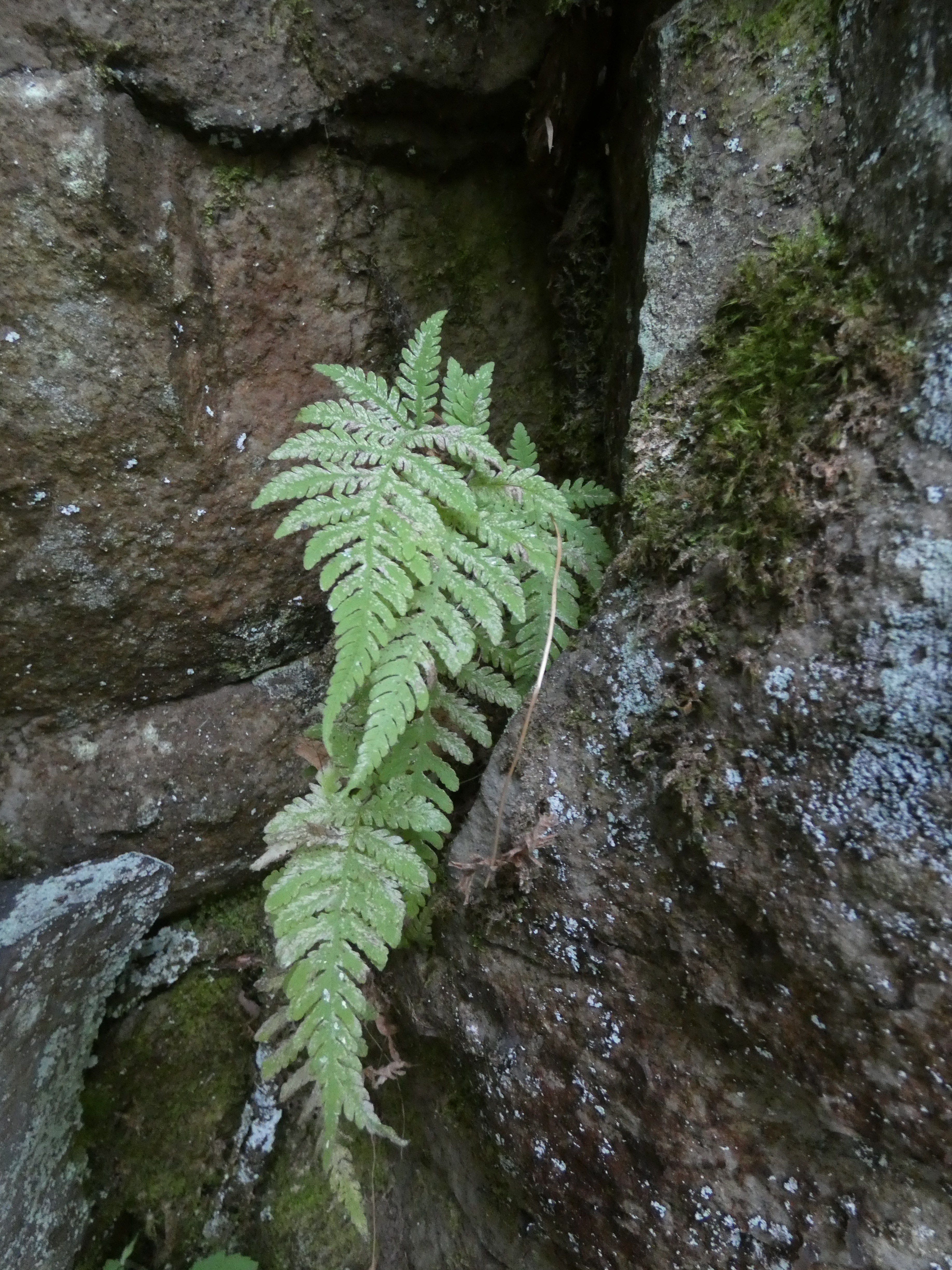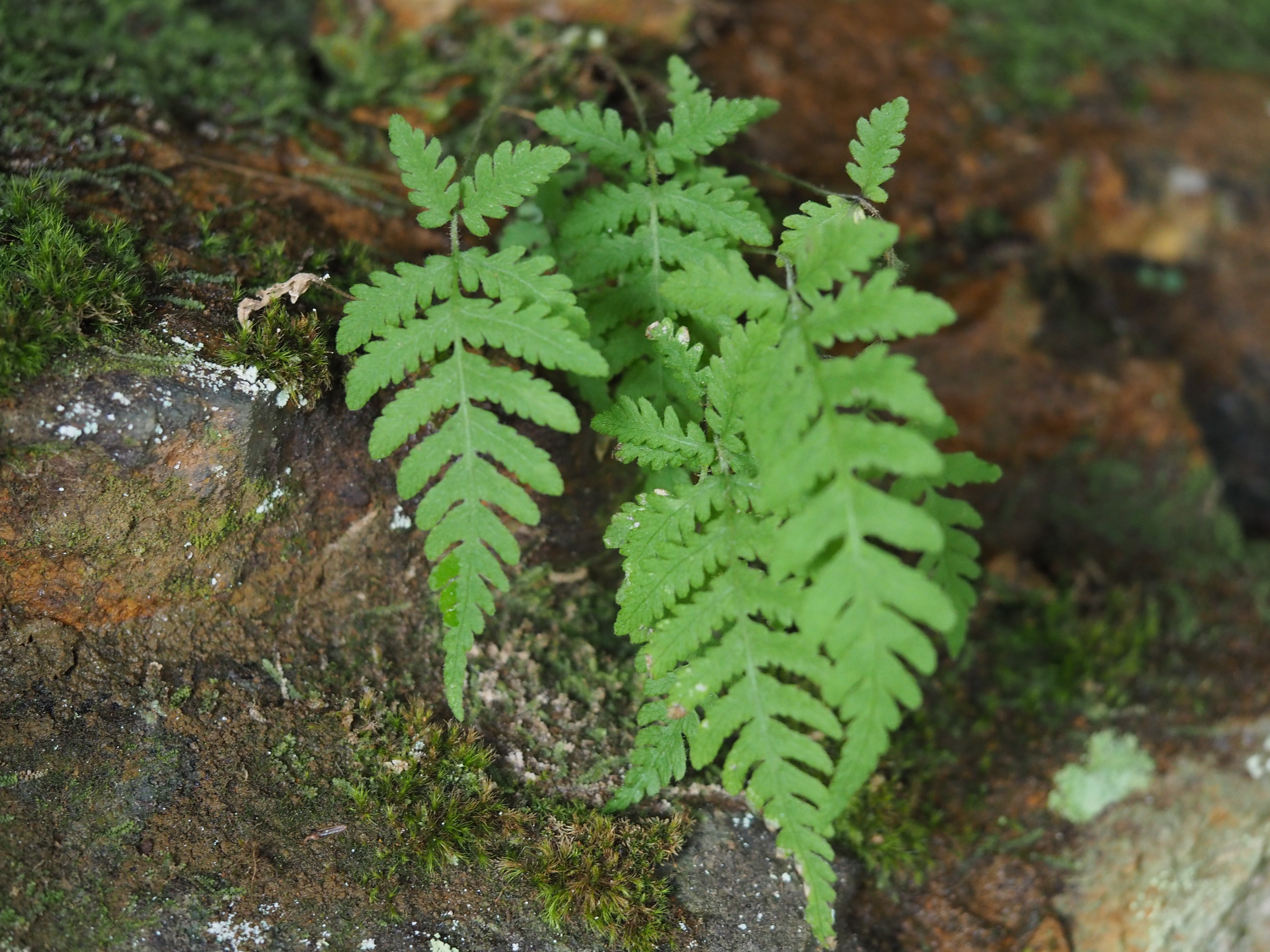Map Snapshot


3 Records
Seasonality Snapshot
Source: Wikipedia
| Phegopteris connectilis | |
|---|---|

| |
| Scientific classification | |
| Kingdom: | Plantae |
| Clade: | Tracheophytes |
| Division: | Polypodiophyta |
| Class: | Polypodiopsida |
| Order: | Polypodiales |
| Suborder: | Aspleniineae |
| Family: | Thelypteridaceae |
| Genus: | Phegopteris |
| Species: | P. connectilis
|
| Binomial name | |
| Phegopteris connectilis (Michx.) Watt
| |
| Synonyms | |
|
Dryopteris phegopteris (L.) C. Chr. | |
Phegopteris connectilis, commonly known as long beech fern,[1] northern beech fern, and narrow beech fern,[2] is a species of clonal[3] fern native to forests of the Northern Hemisphere.
Description
[edit]It grows to heights of 10–50 cm.[3] This plant is pinnately lobed, perennial pteridophyte. It has a thin rootstock. The leaf-stalk is 1-2 times the length of the leaf blade and thin. The leaf blade is somewhat horizontal and triangular, pinnately compound at the base and pinnatisect from then onwards. Leaflets are narrow and pinnately lobed. Lobes are narrow and hairy underneath. The lowest pair of leaves point up diagonally. The sporangium of the plant are located on underside of the leaves.[4]
This species is normally apogamous, with a chromosome count of n=90 (triploid; "3n"=90).[citation needed]
Habitat
[edit]Phegopteris connectilis favors wet habitats: the sides of streams, areas with springs, coniferous swamps and eutrophic paludified hardwood-spruce forests (lehtokorpi in Finnish). Unlike its close relative, Phegopteris hexagonoptera, which is terrestrial, this species is often epipetric as well as terrestrial, able to grow at the bases of rocks and in crevices of shady, moist rock walls.[4]
The plant demands fair nutrition from its seedbed and it does not like acidic ground. Liking shady habitats, it also does not like logging sites. It is also prone to get frostbitten in such areas.[4]
Chemistry
[edit]The phenolic compounds 2,4,6-trihydroxybenzoic acid-4-O-2′,3′,4′,6′-tetraacetylglucoside; 2,4,6-trihydroxybenzoic acid-4-O-2′,3′,6′-triacetylglucoside; 2,4,6-trihydroxybenzoic acid-4-O-3′,4′,6′-triacetylglucoside; 3-O-p-coumaroylshikimic acid; 2-(trans-1,4-dihydroxy-2-cyclohexenyl)-5-hydroxy-7-methoxychromone; kaempferol; and kaempferol-3-O-β-d-glucoside can be isolated from the methanolic extract of fronds of Phegopteris connectilis.[5]
References
[edit]- ^ Lee, Sangtae; Chang, Kae Sun, eds. (2015). English Names for Korean Native Plants (PDF). Pocheon: Korea National Arboretum. p. 568. ISBN 978-89-97450-98-5. Retrieved 7 March 2019 – via Korea Forest Service.
- ^ Phegopteris connectilis in Flora of North America
- ^ a b "Pladias: Database of the Czech flora and vegetation: Phegopteris connectilis". pladias.cz. Retrieved 2023-01-27.
- ^ a b c Piirainen, Mikko; Piirainen, Pirkko; Vainio, Hannele (1999). Kotimaan luonnonkasvit [Native wild plants] (in Finnish). Porvoo, Finland: WSOY. p. 29. ISBN 951-0-23001-4.
- ^ Adam, Klaus-Peter (November 1999). "Phenolic constituents of the fern Phegopteris connectilis." Phytochemistry 52(5): 929–934, doi:10.1016/S0031-9422(99)00326-X
External links
[edit]




